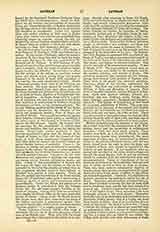

Laski (A LASCO), JOHN, Archbishop of Gnesen and Primate of Poland, b. at Lask, 1456; d. at Gnesen, May 19, 1531. In 1482 he entered the service of the royal arch-chancellor Kurozwcki, who made him provost of Skalmierz and of the cathedral church in Posen, and canon of Krakow. In 1502 he became royal arch-secretary, in 1505 arch-chancellor, in 1509 coadjutor of Archbishop Boryszewski of Gnesen, and, after the death of the latter in 1510, Archbishop of Gnesen and Primate of Poland, whereupon he resigned as arch-chancellor in 1511. In 1513 he took part in the Fifth General Council of the Lateran, when he delivered an oration in which he urged upon Pope Leo X and the temporal princes to assist Poland and Hungary against the continually increasing inroads of the Turks. Though he had little success in his plea for a crusade, he prevailed upon the pope to take measures against the Teutonic Knights, who had been openly and secretly intriguing against Poland ever since 1466, when it had taken West Prussia and Ermland from them and begun to exercise its suzerainty over East Prussia. During the progress of the Late-ran Council, Leo X conferred upon Laski and his successors in the archiepiscopal See of Gnesen the title of legatus natus. The Bull conferring the title is dated July 25, 1515, and is still preserved in the archives of the cathedral chapter of Gnesen (no. 625). It was reprinted in Korytowski’s “Arcybiscupi Gnieznienscy”, II (Posen, 1888), 662. Laski’s elevation to the cardinalate by Pope Leo X is said to have been prevented by King Sigismund. Archbishop Laski was a zealous upholder of ecclesiastical discipline within his archdiocese, and a strenuous opponent of Protestantism in Poland. To put a stop to various ecclesiastical abuses, he held two provincial synods at Piotrkow (1510, 12) and a diocesan synod at Gnesen (1513). The seven other provincial synods which he held were intended chiefly to stem the spread of Protestantism in Poland. Four of these were convened at Lencicz in the years 1522, 1523, 1525, and 1527, and three at Piotrkow in 1526, 1532, and 1533.
Many of the legislative measures passed at these synods are printed in the “Constitutiones synodorum metropolitanae ecclesiae Gnesnensis” (Krakow, 1630). Most of the canons and decrees of the earlier synods Laski edited in his “Sanctions ecclesiasticae tam ex pontificum decretis quam ex constitutionibus synodorum provinciae excerpt, in primis autem statuta in diversis provincialibus synodis a se sancita” (Krakow, 1525), in his “Statuta provincialia” (1512), and “Statuta provinciae Gnesnensis” (1527). After the marriage of King Sigismund of Poland with Barbara Zapolya, in 1512, Archbishop Laski entered into friendly relations with John Zapolya, a brother of Barbara and an aspirant to the Crown of Hungary. He sent his nephew Jerome Laski to Hungary to assist Zapolya with money and troops in his opposition against the rightful King Ferdinand of Hungary. If we may believe his enemies (especially Cardinal Gattinara) he continued to support his nephew even after the latter allied himself with the Turkish Sultan Soliman with the purpose of marching upon Vienna. In 1530 he was cited to Rome by Clement VII to give an account of his actions. His departure was, however, delayed by King Sigismund, and he died the following year after expressing his desire to resign his see. Besides collecting the synodal legislations mentioned above, he made a compilation of the most important laws of Poland while he was arch-chancellor. The work is entitled “Commune inclyti Polonne regni privilegiorum, constitutionum et indultuum”, etc., and was published at Cracow in 1506. His “Liber beneficiorum archidicecesis Gnesnensis” was edited by Lukowski, with a biography of the author by Korytowski (Gnesen, 1880-1).
MICHAEL OTT

